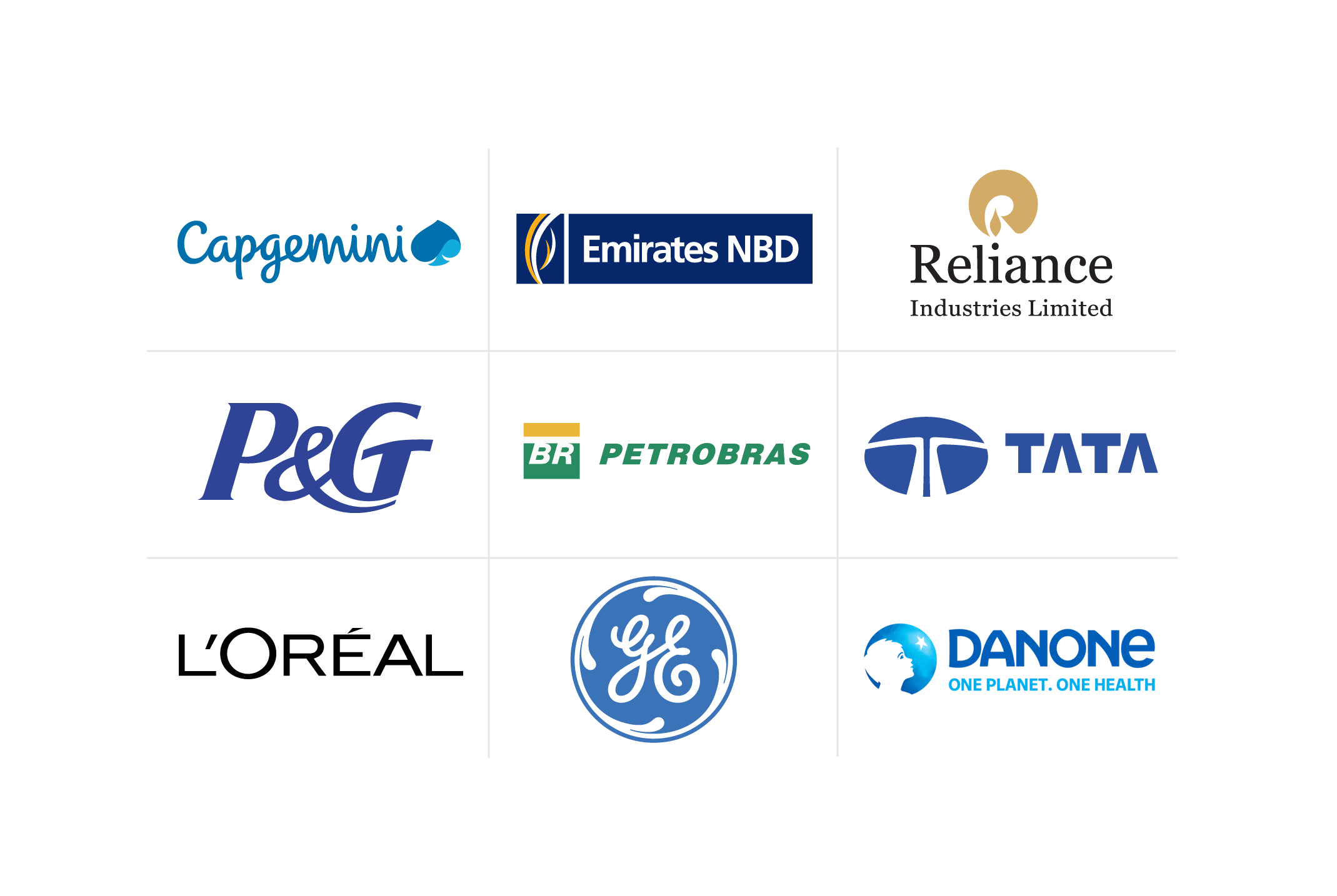Skills Planning: Navigating the Future for Corporate Success
Why are more companies adopting a skills-based strategy for hiring and training? Explore how skills planning enhances corporate success and why employees benefit from adopting this approach.
![[Featured Image] A human resources leader smiles after completing a comprehensive skills planning strategy session with an approach that benefits employees and the company.](https://d3njjcbhbojbot.cloudfront.net/api/utilities/v1/imageproxy/https://images.ctfassets.net/2pudprfttvy6/3X2428K1HYLzs2RkuBAHpl/0902028886ac0db9166790e213b23912/GettyImages-1807205311.jpg?w=1500&h=680&q=60&fit=fill&f=faces&fm=jpg&fl=progressive&auto=format%2Ccompress&dpr=1&w=1000)
Skills planning goes beyond being a corporate buzzword. It’s a strategic approach that aligns employee talents with business goals. Skills planning and skills-first approaches help you build a workforce with critical skills, increase your organization’s productivity, create an environment dedicated to continual improvement, upskill current employees, and develop a culture of learning. What’s more, data from Deloitte reveals that 73 percent of employees believe skills-based practices can improve their work experiences, and 90 percent of executives are actively planning to incorporate a skills-based approach [1].
This article explores the essence of skills planning, including what it is, how it benefits organizations, and strategies for implementing it.
How to embrace skills planning within your workplace
The skills that you cultivate within your employees directly impact your organization’s ability to innovate, stay competitive, and adapt to market changes. By foreseeing skill gaps and addressing them proactively, you can more effectively evolve alongside technological advancements and market trends.
To focus on skills planning within your business, assessing the skills and competencies required for your organization to thrive is critical. Once you have determined these key focus areas, you can develop a plan to cultivate these skills within your workforce through hiring and upskilling. Skills planning should involve current and future skills, creating a pathway for ongoing success.
One way to do this is by understanding the relationship between individual employee skills and how they contribute to broader organizational objectives. You want to match the right skills with the right tasks, driving your company forward by allowing employees to work in dynamic positions. This alignment ensures that every team member works within a role that utilizes their strengths, increasing productivity while providing a chance for natural employee growth.
Read more: Performance Management Best Practices
How skills planning benefits organizations
Implementing skills planning in your workplace strategy offers various benefits, including improved employee satisfaction and retention. Over time, you may see changes in how your employees value your organization, the composition of your workplace, and collaboration dynamics. Let’s explore each benefit in more depth.
Increased employee retention and satisfaction
When employees believe their employer supports their professional development, their likelihood of staying with the company increases. According to Deloitte’s 2022 global skills-based organization survey, nearly three-quarters of employees felt skills-based practices could improve the employee experience. Meanwhile, 66 percent of workers believed they would be more likely to remain at their organization if skills-based practices were in place [1].
Diversified workforce
By opening job postings based on skills, the candidate pool widens, allowing people with less traditional educational and experience pathways to apply and showcase their talent. For example, several groups, such as the Ingka Group and ManpowerGroup, orient hiring practices and job postings for accessibility to people of all backgrounds, including refugee and forcibly displaced populations. Hiring teams in these organizations assess candidates based on skills rather than qualifications and integrate training and development programs as needed to upskill employees and offer internal opportunities for growth.
Utilized employee skills
Use skills planning to deconstruct jobs into a set of tasks. Rather than having static teams that work on the same project types, you can consider which employees best match different aspects of projects or initiatives as they arise. Doing so also opens opportunities for gig workers and freelancers, allowing you to hire people with specific expertise for a project or task.
Several organizations, including Mastercard and Unilever, have seen success operating with this framework. During the COVID-19 pandemic, executives at Mastercard began experimenting with manually matching employees to opportunities on projects within the company. This “gig-like” placement of employees was so successful that the company shortly scaled up its initiative and formally introduced it into the organization’s framework.
Employee retainment and growth
By allowing employees to shift within their roles and build new skills, you can offer career growth and development opportunities while enhancing organizational productivity. Many employees may have skills that their current positions underutilize but could fill gaps in other project areas.
Adopting an employee-driven approach to skills planning allows employees to share their skill sets and volunteer for opportunities to contribute positively. This provides a natural pathway for employees to grow within the organization, take on more responsibility, and continue building skills and experience.
Read more: Top Strategies for Retaining Talent Today
Strategies for effective skills planning
When you implement a skill-first framework within your workplace, you can take several steps to improve its adoption and begin implementing changes that maximize the benefits for your employees and organization.
Identify current skills gaps and future skills needs
Before operationalizing a skills-first approach in your workplace, you need to know which skills you need to cultivate now and anticipate skills you will likely rely on. This dual focus helps you understand immediate training needs and implement pathways to prepare employees for future responsibilities.
Ongoing data collection offers an incredibly effective way to analyze and anticipate company needs. Looking at labor-market data externally to track rises and dips in industry demand can provide insight into economic changes. In contrast, internal data on employee learning and performance progress can help you design training plans to improve performance on specific projects. To streamline the data collection process, many companies benefit from technological solutions, such as artificial intelligence platforms that automatically analyze and synthesize large volumes of information.
Design job descriptions around skills
If you know that employees need specific skills to succeed in a job position, focusing hiring practices around practical knowledge rather than formal qualifications helps to ensure you’re hiring candidates who can effectively meet your expectations.
IBM leads the charge in corporate skills planning. As the talent shortage in the United States continues to increase, IBM endorses a skills-first approach in its workforce development. When hiring, the leaders at IBM design job descriptions to focus on the skills the candidates need, leaving the required credentials to a minimum.
Build targeted training programs
Skill development should be a priority for employee engagement and retention, mainly as you design a modern workplace environment. The expansion and integration of technology rapidly change the skills employees need to succeed and remain competitive, which is why it’s so critical that companies offer in-house professional development opportunities.
When building targeted training programs, you can design pathways for skills that transition between your organization's current and projected future needs. This targeted approach to reskilling helps you enhance your workforce, gain more accurate insights into persistent skills needs, and make decisions about hiring and additional training.
Make strategic decisions based on your insights
What you learn from your skills assessment and skills-based strategy development can guide future planning and restructuring within the company. You can make hiring decisions to fill skills gaps, upskill employees for specific growth opportunities, and integrate targeted technological enhancements to meet your short and long-term organizational goals.
Overcoming challenges in skills planning
Focusing on skills development and planning skill-development pathways can set your organization up for ongoing success. Skills planning can also present some challenges you might face along the way. Anticipating potential obstacles can help you prepare strategies ahead of time to reduce adverse effects.
Personalizing employee training plans can be challenging. Even if you anticipate your organization's downstream skills needs, individual employees might need to develop a clear career path to help guide the skills development best suited for their goals. In other cases, you might find some organizational resistance to change and uncertainty about handling changing structures. In these cases, maintaining patience, flexibility, and prioritizing personalization can help keep you on track.
Implementing new programs requires cross-team collaboration. To fully redesign how your organization works, you’ll need to collaborate with experts in workforce transformation, integrate new digital tools, and provide development opportunities. This can feel challenging as you begin, but seeking out and partnering with experts in these areas can help you effectively make this transition. You can start with minor changes, such as redesigning job postings and planning for known challenges, and gradually implement more extensive changes.
The role of technology in skills planning
Technology plays a significant part in supporting the entire skills planning process, from data analytics, which can pinpoint the areas to focus on, to AI, which offers more personalized learning options, and online platforms that provide improved access. Data analytics tools enable organizations to sift through large amounts of employee performance data to identify skills gaps and predict future training needs. Data analysis helps support improved, informed decision-making about skill development efforts, ensuring you’re always ahead of industry demands.
Learning management systems (LMS) provide a platform for efficient skills development. They deliver, track, and manage training programs and can personalize training pathways for different employee goals while keeping track of progress. Collecting ongoing feedback throughout the training process allows you to learn what works and what doesn’t, making it easier to adjust your programs as workforce needs evolve.
Why skills-based training fosters a culture of lifelong learning
When a company culture values continuous skill development, learning is integral to everyday work. It drives employees to embrace curiosity, innovation, and a willingness to learn new things. This environment motivates employees to expand their skill sets and benefits them by promoting personal development, expanding opportunities, and fostering a growth mindset.
Read more: How to Encourage Positive Organizational Culture
Realize the full potential of skills planning on Coursera.
The Coursera learning platform is a global classroom that can fit perfectly into your corporate strategy. Companies can weave course offerings on Coursera into their skills planning, ensuring that every employee has the opportunity to grow, adapt, and excel at their own pace. You can leverage the flexible learning environment to offer custom learning paths for your employees, matching their unique skills to learning paths aligned with strategic objectives.
Learn more with Coursera
Skills planning drives corporate success through strategic hiring and training practices and increases employee engagement and retention. With the Organizational Leadership Specialization offered by Northwestern University on Coursera, you can continue learning tips on effectively designing and leading a modern workforce. Coursera for Business provides access to this and more, with learning opportunities designed to meet your skills planning objectives.

Article sources
Deloitte. “The Skills-Based Organization: A New Operating Model for Work and the Workforce, http://www2.deloitte.com/content/dam/insights/articles/us175310_consulting-the-skills-based-org-report/DI_The-skills-based-organization-report.pdf.” Accessed July 15, 2024.
Keep reading
- June 13, 2024
- June 13, 2024
- June 13, 2024
- June 13, 2024
- June 13, 2024
- January 15, 2025
This content has been made available for informational purposes only. Learners are advised to conduct additional research to ensure that courses and other credentials pursued meet their personal, professional, and financial goals.

